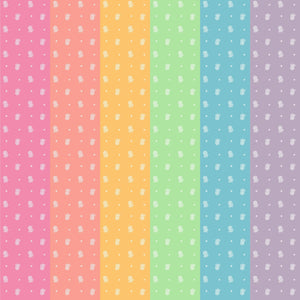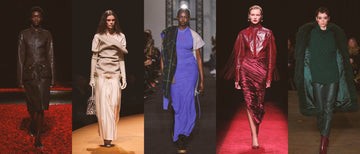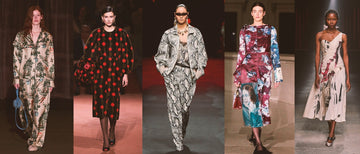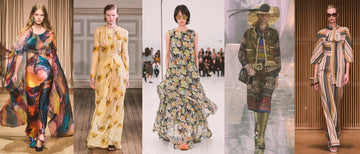History of Paisley
Plumager® can help you find the perfect print!
Paisley print is a well-known favourite for detailed and intricate patterns which are displayed through fashion and interiors. The 1960s was the prime fashion of paisley. This style coincided with the psychedelic swinging 60's which created the ‘summer of love’ and the free-love movement of the time, from the famous Beatles wearing the bold design, and making Paisley the known fashion of rock and roll for that time period. The history behind the rise of paisley prints in the 1960s was in relation to the growing immigration of the Asian community into the British which saw a more cultural blend. The 60’s saw a looser living of life in comparison to the previous decades of poise and proper style.
The style was popularly brought back for a minute in 1990 with the reboot of some 60’s music by bands such as Oasis. In 2012 the style made another appearance on the spring catwalks of Topman and Jonathan Saunders, through bold psychedelic prints which manifest those of the 1960s, but also some tamed back styles which resemble a softer floral approach. Throughout decades there is always a style of paisley shining through.
Perfecting the paisley style can be difficult to perfect and can take years of practice. It is a style of bohemian art form that has layers upon layers of detailed patterns compiled of many shapes and styles, and finalised with colour detailing to make each one of them unique.

The spread of the Paisley print started from around 1775 when a mixture of travellers, military and the East India Company gathered some of the traditional shawls and brought them back to Europe with them. The intention was to bring them back and they would be worn by elegant rich women for fashion. They were produced in a vast amount of numbers all over the world and seen their way into the modern society of the time. The print is traditionally of Persian and Indian origins; however, the name Paisley comes from a traditional Scottish heritage and through the long history of producing the prints.
Throughout decades there is always a style of paisley shining through.
Between 1800 and 1850 paisley made its first appearance in Britain through the channels of Scotland, particularly into a weaving town of Paisley on the outskirts of Glasgow, where it gained its name. Traditionally Paisley print was woven using the jacquard style. However, they were also printed using a block print method which was painted by hand across India. This particular fashion style of the paisley shawl started to decline with the change in fashion trends and after the Franco-Prussian war of 1870-71 which led to a lack of supplies from Persia due to export problems. Once the cheaper versions of the shawls started coming into the markets using cheaper methods and fabrics they became less sought after, none the less paisley style made its mark on the textile’s world.

The height of paisleys prints in the 1800's was the paisley print shawl, woven with quality Kashmir, also known as cashmere which originates from Colonial India. As of 2021 Paisley are bidding to become the United Kingdom’s city of culture because of their history with the particular Paisley style.

A similar style of Paisley print was on the rise around the same time in Persia known as ‘Buteh’; except this design took on a more floral approach to the traditional paisley. The royal family of the time used ‘Buteh’ style to decorate many of their elegant jewellery and garments. The primarily used prints were woven in silk and embellished using a silver or gold threads. Paisley has primarily been more noticeable in men’s fashion accessories, throughout the seasons, like ties and pocket handkerchiefs.

Paisley print is traditionally noticeable by its unique shapes known as a teardrop, mango, and kidney shape which are used to create the overall busy print style. Paisley can also feature many other shapes to blend into prints, mainly florals in the styles of ditsy and folksy style. One of the other shapes that can be seen throughout the paisley style is the lotus shape which is not as common but is still visible in plenty of designs.
REFERENCES
Baker, L., 2017. Paisley's journey from its origins in Persia to hippy chic and contemporary fashion, via a Scottish textiles town. Lindsay Baker reports.. [Online]
[Accessed 4 2 2021].
Brian, 2018. Getting to the roots of paisley design. [Online]
[Accessed 4 2 2021].
Brian, 2018. Paisley Patterm. [Online]
[Accessed 4 2 2021].
Fashion, G., 2011. A brief history of paisley. [Online]
[Accessed 4 2 2021].
McGuire, B., 2013. Roots of the paisley pattern. [Online]
[Accessed 4 2 2021].
 |
Amy Davidson |
| Amy Davidson is a newly graduated textiles designer from Scotland, who loves to travel, the colour orange and hairbands in as many colours and prints as she could possibly get her hands on. Her favourite style of print to work with is anything that’s bold, colourful, and tropical! |






2 comments
fun! Love my Paisley ❤️❤️❤️
I really enjoyed reading this! I had no idea Paisley was a place in Scotland! I’m looking forward to the next piece. -Jen